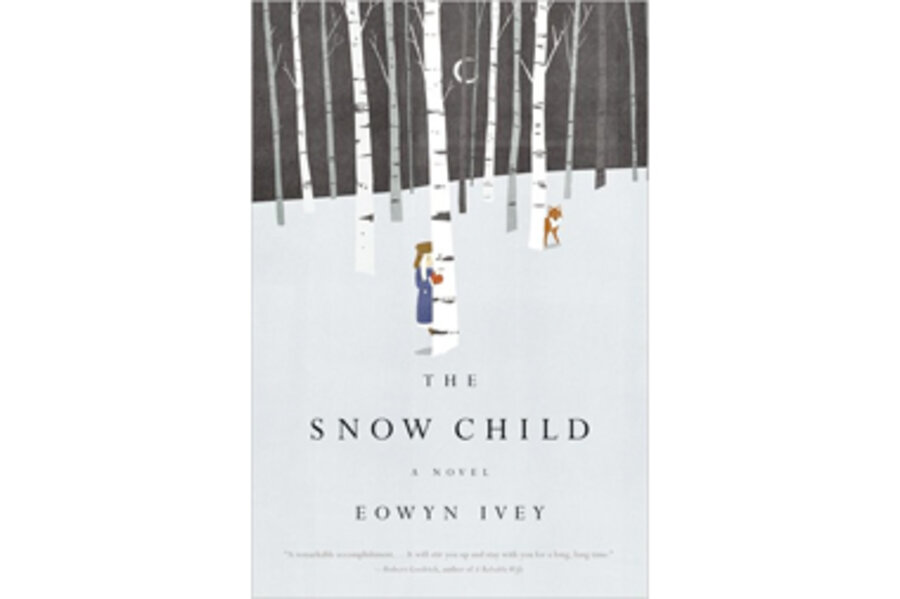When you think of people heading to Alaska to make their fortunes a century ago, middle-aged, female bookworms don't immediately come to mind.
Mabel saw the wilderness as a last chance for herself and her husband, Jack, to create a new life. So off they went in 1918 – with as many books as she could stuff in her trunks. She “imagined the two of them working in green fields framed by mountains as tall and snowy as the Swiss Alps.”
Unfortunately, Alaska isn't “Heidi,” and it looks like the mountains may just finish them off at the start of Eowyn Ivey's fairy-tale-like debut, The Snow Child (Little, Brown & Co., 400 pp.). The farm isn't doing well, Jack isn't as strong as he used to be, and their savings are almost gone heading into another winter. Instead of a renewed closeness from their shared adventure, Jack and Mabel barely speak, “each of them fading away without the other's notice.”
At the first snowfall, the two, in a rare playful mood, make a little snowman and dress it up. That night, Jack glimpses a blonde girl running through the woods wearing the snowman's scarf and mittens, and the next morning, the sculpture is ruined. Mabel recognizes the plot from one of the fairy tales her dad used to tell her, and becomes convinced the sculpture has come to life. Jack, more pragmatic, is sure there's a more earthly explanation. But their neighbors have never seen the little girl, and they're concerned Alaska's hard winters have turned delicate Mabel's mind.
Books based on fairy tales are usually guaranteed a happy ending. But when your source is the “The Snow Maiden,” happily ever after becomes a shakier proposition. The Russian fairy tale is a melancholy version of Frosty: In all the versions, the child leaves, usually because the man and woman don't love her enough. Profiting from a lifetime of reading, Mabel is determined that the little girl, whose name is Faina, will never, ever feel that way.
“The Snow Child” keeps the once-upon-a-time quality of a fairy tale while just skating the edge of magical realism. (Jack is right. But then, so is Mabel.) Ivey, an Alaska native, also grounds her story in enough detail to to keep it anchored. (The moose and potatoes diet alone would be enough to keep anyone from romanticizing life on the frontier.) While fairy tales don't normally run on so long, Ivey peoples hers with kind-hearted characters it's a pleasure to spend 400 pages with.
Overall, the book's ethos is best summed up by a letter from Mabel's sister: “In my old age, I see that life itself is often more fantastic and terrible than the stories we believed as children, and that perhaps there is no harm in finding magic among the trees.”







